Special report: Beachfront residents face levies to build seawalls for Oceanway path
The extension of the Oceanway through one of its missing links is in doubt, with Mayor Tom Tate making a bold statement about the project.
Council
Don't miss out on the headlines from Council. Followed categories will be added to My News.
Mayor Tom Tate has ruled out building “sacrificial” sections of the Oceanway while he’s in power, declaring them to be a waste of time and money.
The Bulletin revealed over the weekend that the Oceanway cannot be finished unless sections of the multimillion-dollar beachfront rollout were made “sacrificial”, meaning those bits were likely to be obliterated by storms and need rebuilding.
Private beachfront homeowners were also facing a potential “levy” to pay for beefed-up boulder walls.
City officers have cautioned councillors about proceeding with expensive infrastructure given new research shows that most beaches are at risk of losing much of their sand due to climate change.
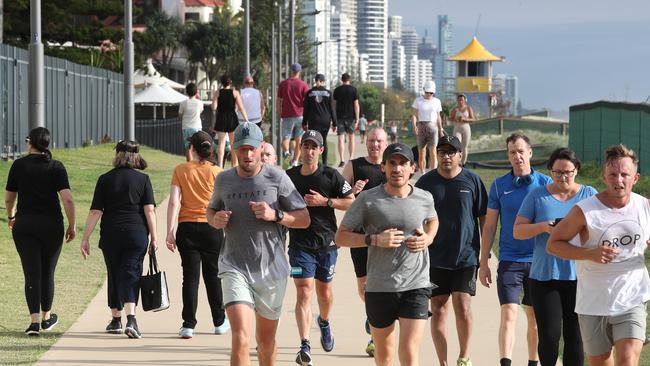
Mr Tate said on Monday no “sacrificial” sections of the Oceanway would be built while he was in the city’s top job.
“I am absolutely against building anything that is sacrificial because when a storm like ex-tropical cyclone Oswald comes and hits and all the pathways get washed to the beach, we would have to go and clean that up,” he said.
“You’ve lost all your investment. Gone. You might have spent $20m and that’s in the ocean, while you’ll then have to spend $1.5m to clean it all up, maybe more, and then rebuild it.
“I can tell you right now the state government is not going to come and fund that because you shouldn’t have built it.
“For those areas which would need to be sacrificial, I’m sorry but we have plenty of pathways for you to walk on and, if you’re fit, you can walk on the beach.”
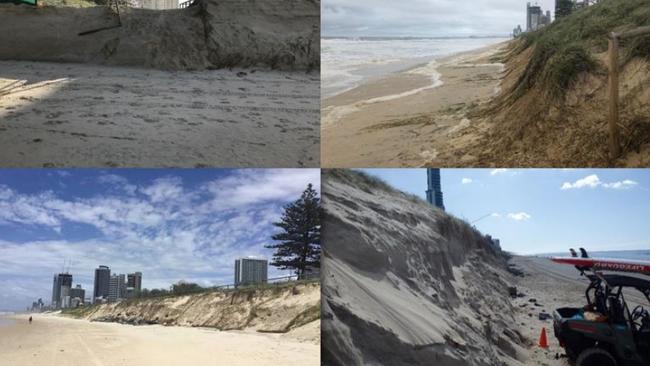
Mr Tate said “sacrificial” infrastructure was “not value for money” if Mother Nature was going to take it away.
“Build west of the A-line, not while I’m mayor,” he said.
“I’m an engineer — it would be negligent for me to vote yes to build on that and if it is negligent for me to vote yes, I would tell other councillors to think about it hard.
“Eight hands can vote but I would say it will not happen while I’m mayor because there would be so much litigation to stop it and I’d be a witness saying it’s not a good idea.
“Oceanway? In that area it’s called the beach.”
Recent studies have revealed up to half of the Gold Coast beaches each year are in danger of losing all their sand due to storms and longer term impact of global warming.
The eroded northern beaches at Narrowneck have stopped Oceanway construction.
A solution on completing the “missing links” of the 36km path – now heavily used and regarded as one of the Gold Coast’s top tourism attractions – is to complete a certified A-line seawall east of the concrete walkway.
Council is to consider introducing a special levy on beachfront homeowners requiring them to build private boulder walls to provide a “last line of defence”.
The hot spots include ‘Millionaire’s Row’ at Hedges Ave, where the Oceanway is part of the Stage 3 light rail package with funding from State Government and council.
In a brutal reality check on one of the city’s most important tourist attractions, officers told councillors: “All of the simple parts of the Oceanway have been completed. Everything that’s left has its difficulty. There are no bits of the Oceanway that we can jump in and do that we haven’t done.”
Oceanway faces huge hurdles to be completed - shock report
The Oceanway cannot be finished unless sections of the multimillion-dollar beachfront rollout are made “sacrificial”, meaning those bits are likely to be obliterated storms and need rebuilding.
Private beachfront home owners are also facing a potential “levy” shock to pay for beefed-up boulder walls.
City officers have cautioned councillors about proceeding with expensive infrastructure given new research shows most beaches at risk of losing much of their sand due to climate change.
But a solution on completing the “missing links” of the 36km path - now heavily used and regarded as one of the Gold Coast’s top tourism attractions - is to complete a certified A-line seawall east of the concrete walkway.
Council is to consider introducing a special levy on beachfront home owners requiring them to build private boulder walls to provide a “last line of defence”.
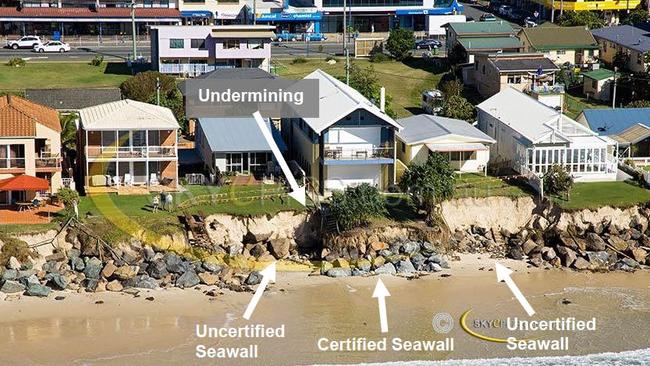
The hot spots include “Millionaire’s Row” at Hedges Avenue, where the Oceanway is part of the Stage 3 light rail package with funding from State Government and council.
In a brutal reality check on one of the city’s most important tourist attractions, officers told councillors: “All of the simple parts of the Oceanway have been completed. Everything that’s left has its difficulty. There are no bits of the Oceanway that we can jump in and do that we haven’t done.”
Officers when asked by councillors on a costs, estimated “$10,000 per metre” for residents to complete the A-line seawall at their beachfront homes. To build the oceanway, sections are costing ratepayers between $6 million and $11 million.
Planning chair Mark Hammel asked officers whether the City had ever considered creating a special levy to ensure the A-line wall was completed.
“That is one of the options we will be exploring in this process,” an officer replied. A report with options will be finalised in mid-2025.
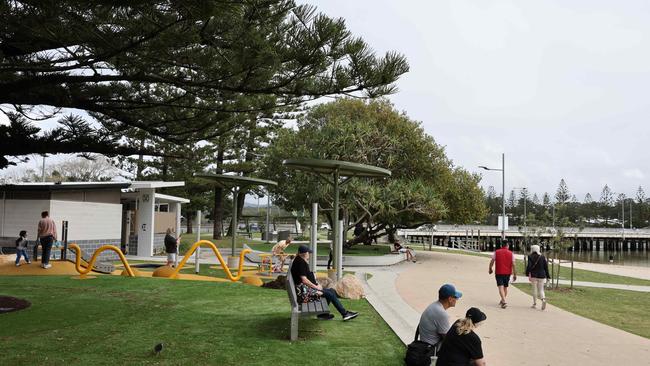
Palm Beach-based councillor Josh Martin and Miami-based councillor Nick Marshall during a briefing on State of the Beaches asked councillors about the status of the Oceanway.
“I believe the remaining sections of Oceanway are in the most exposed locations along the coastline, which does not have seawalls in place,” a senior officer replied.
Mr Marshall asked if the lack of certified walls at Hedges Avenue was a “sticking point”.
“It’s one of the locations on the coastline where we don’t have the full protection, the full coastal resilience. We would not be able to put an asset in there, in its current form,” the officer said.
“The seawall would need to go through before the Oceanway was built.”
The City does not have the power to enforce private owners to build seawalls, which means building an Oceanway east of exposed residential properties was a “risk situation”.
“We can put an Oceanway in an area where it’s exposed, we would therefore have to accept as a city that if we did that and a storm event came through, the Oceanway would be damaged and out of service,” the officer said.
A recent update revealed up to half of the Coast beaches each year are in danger of losing all their sand due to storms and longer term impact of global warming. The eroded northern beaches at Narrowneck have stopped oceanway construction.
Mayor Tom Tate who in the lead-up to the March local government poll backed an oceanway along Hedges Avenue believes - given his engineering background - there are solutions.
“First up, where we can build the oceanway on the west side of the A-line, those projects should all go ahead and be budgeted with joint funding of the State Government, that’s my view on that. Let’s do the easiest parts first,” he said.
“Regarding the east of the A-line, I would say I would want a geotechnical report, what can be do, and type of structure we build that is not sacrificial.”
On Mermaid Beach, he continues to support the Oceanway there but not at huge council impost.
“But I’m not into buying up people’s backyard. One can’t afford it, and secondly, people’s backyard, it’s private,” he said.
“It would be great. The majority of people would love it. A matter of fact I’ve had people when we’ve built it, down Tugun way, say “this is fantastic”. They can walk out of their backyard to an walking esplanade.”
Transport committee chair Darren Taylor, who has a division covering Main Beach and The Spit where beach erosion is stalling Oceanway works, remains a strong supporter.
“The (council officer) report actually did talk about private properties and seawalls. We need to ensure that the whole Gold Coast is protected,” he said.

“We need to make sure that local residents do know that if their properties are not protected, they do protect it and get the seawall built.
“But in relation to Oceanway, we want to continue it from one end of the Gold Coast to the other.
“There are sections we need to consider the areas where sand has been affected. We do have some parts of these oceanways at the moment that we call sacrificial. But the intent is to try ensure most of it stays west of the actual A-line.”
Mr Taylor said work needed to be done on sand replenishment in “missing link” locations like Narrowneck.
“There are areas where we need to build sand up, and we need to consider the areas where the missing links are that we have the volume of sand to build an oceanway if we do consider it to be sacrificial. We do as a city want to see the oceanway from one end to other,” he said.
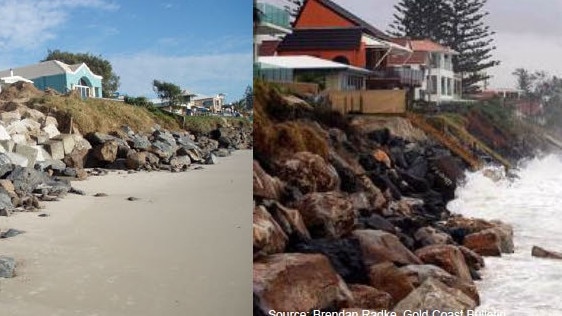
FAST FACTS — GOLD COAST SEAWALLS:
* to reduce damage to public and private property during erosion events, seawalls have been built since the 1920s;
* the boulder walls are buried beneath sand dunes and are constructed as the City’s “last line of defence” in a severe storm event;
* after several cyclones the state government in 1967 approved an A-line boulder wall running parallel to sand dunes along the entire Gold Coast coastline;
* since the 1980s the council has aimed to build a continuous beachfront protective wall along 52km of coastline, apart from the headlands;
* while Council has worked to complete more than 80 per cent of public seawalls using ratepayer money. But it found only 53 per cent of private seawall had been certified;
* legal opinion sought by residents later suggest they are not responsible for maintenance;
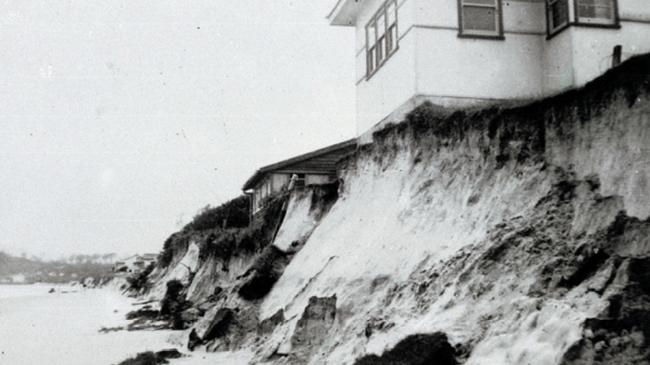
* In May 2013, Council resolved to increase funding of public seawall construction to achieve the construction and certification of all public seawalls by 2050;
* Gaps still remain where private sections have not been constructed or certified, weakening the overall defence;
* the City is targeting an aspirational date of 2035 for the 100 per cent certification of public seawalls — and officers say council is “well on track” due to increased construction;
* to achieve a continuous certified seawall along the A-line also requires about 8.9 km of private seawalls be built and certified alongside the 13.7km of public seawalls;
* based on the current rate of private seawall certification, full certification of private seawalls will not be possible by the preferred target date of 2035 or even the later 2050 target;
* the City is looking at options to get 100 per cent certification, including new charges or changing planning laws where major alterations to property require a seawall in place;
* outcomes of an investigation will be released mid-next year when councillors vote on them.
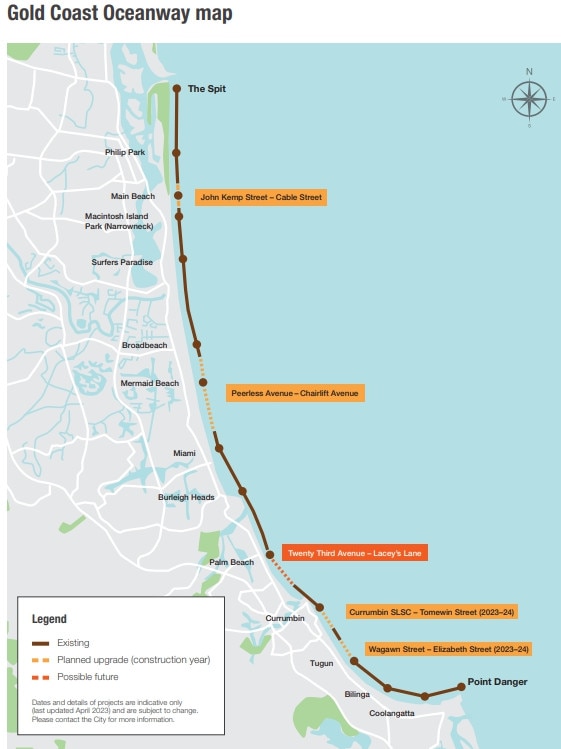
OCEANWAY — MISSING LINKS AND WHAT’S NEXT
* since the early 2000s, City starts building a “world class facility” for residents and visitors;
* a major plank of the Gold Coast Transport Strategy 2031, the path varies from 3.5m to 5m and is to be shared by pedestrians and cyclists;
* sections completed include Surfers South (2023), Palm Beach North (2022), Tugun to Bilinga lighting upgrade (2022) and Tugun to Bilinga (2018);
* almost $7 million is being spent on seawall certification and Oceanway construction along Pacific Parade at Currumbin between Tomewin Street and Currumbin Vikings SLSC;
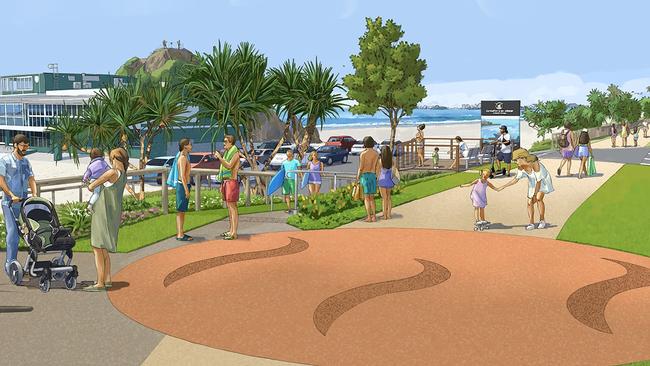
* key missing links include John Kemp Street to Cable Street at Narrowneck, facing delays of several years, to secure more sand on the eroded beach enabling northern link to The Spit;
* the Mermaid Beach section from Peerless Avenue to Chairlift Avenue is also missing, with lack of private certification the stumbling block;
* light rail Stage 3 to Burleigh due to loss of Gold Coast Highway space is to provide alternative travel options, which will see council and State Government investigate the Mermaid section along with improvements from North Burleigh to Burleigh pathway.





